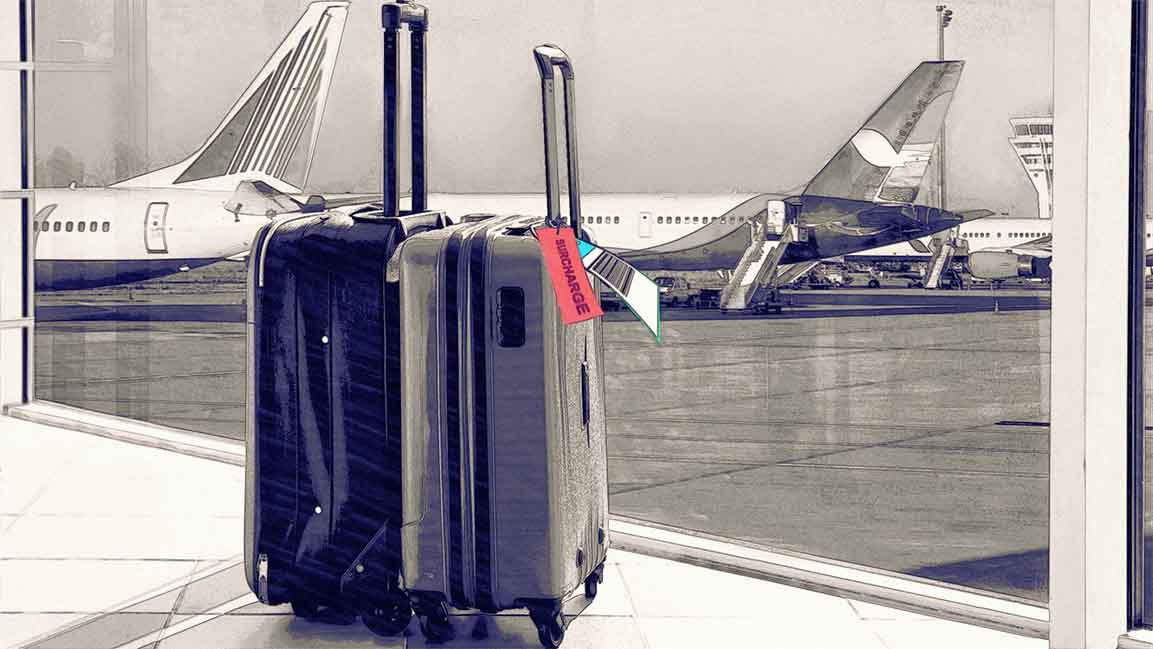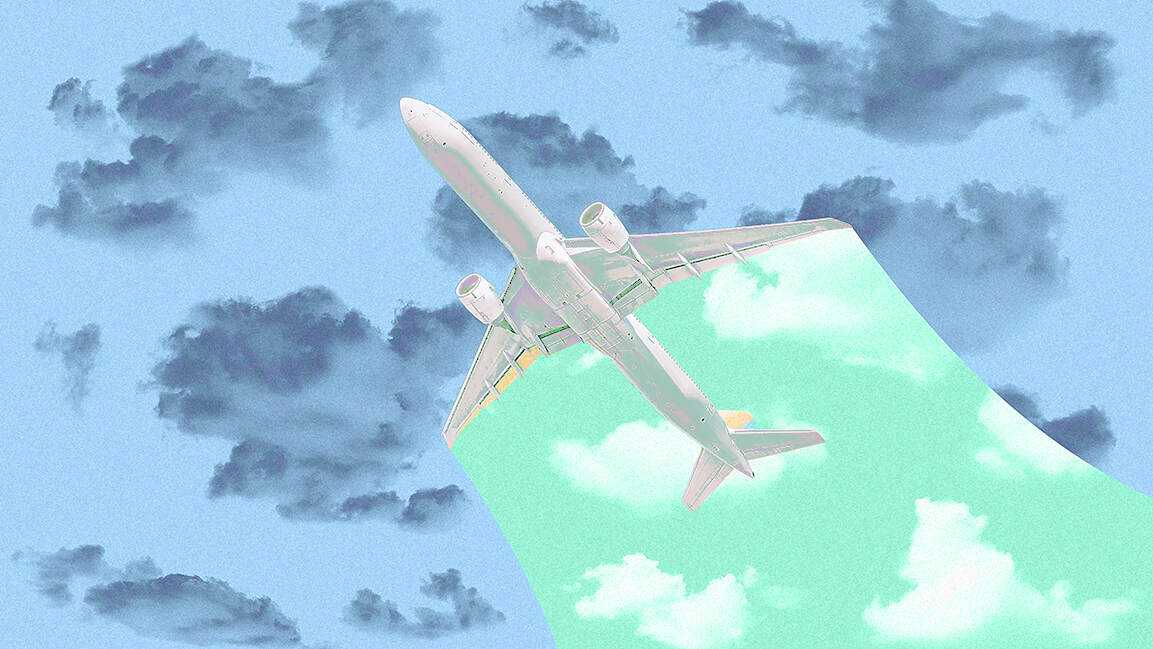- | 9:00 am
Airfares in the Middle East are peaking. Is the industry exploiting pent-up demand?
Rising cost of airfares is due to pent-up demand, reduced capacity vs. pre-pandemic, airline debt, and inflation, say analysts

Here’s what you need to know about travel this summer: You’ll pay more and might even take a detour or two to cut costs. With the prime holiday season in, many people wonder whether they should push forward with travel plans — or just plan to stay nested.
While inflation is still making headlines, the travel industry is much better prepared for this summer than last year; major airlines in the Middle East have reported record profits so far, but you are paying significantly more to get away.
Travelers are grappling with bigger price jumps than other regions and continue to fork out more than usual for flights this year, even as planes return to the skies at a rate not seen since the start of the pandemic.
In some cases, customers are paying twice what they did four years ago.
A business class ticket from Dubai to London that would have cost approximately $3,500 in 2019 has almost doubled to more than $6000.
In March, Airports Council International (ACI)-Asia Pacific said the flight ticket prices in the Middle East were above the global average – up 35% in real terms and 53% in nominal terms over 2019.
The increase in airfares was significantly above the global average, with airline yields (revenue per RPK) 29% higher in 2022 than in 2019 in nominal terms.
With current price levels, who is hurting the most?
Ahmed Nasser, 35, recently booked a round-trip flight from Dubai to Cairo and paid over $862 for an economy ticket. He says that that ticket would cost roughly $500 in the past, expressing his frustration by saying, “For those prices, I should be able to fly internationally round-trip.” Nasser iterates his frustration as an avid traveler, saying that because of skyrocketing flight prices and the rising cost of living, he’s had to cut back on leisure travel.
“With current price levels for airline tickets, and for the current timing, the passengers are getting affected the most. Small travel agencies and tour operations might be the most affected, as higher airfares can impact their competitiveness and profitability, making it more challenging to offer affordable package deals or attract customers,” says Farah Mourad, senior market analyst of XTB MENA.
PART OF A BROADER TREND
The surge is part of a broader trend, experts say.
“Higher airfares in the Middle East mirror what has happened in other parts of the globe, where consumers are scratching their heads wondering why prices have skyrocketed. The IATA reported that the Middle East had a 43.1% increase in air traffic in March compared to a year earlier. Higher demand is equaling higher pricing, particularly with airline capacity levels still trying to catch up with pre-pandemic levels,” says Tim Waterer, Chief Market Analyst at KCM Trade.
ForwardKeys Vice President Insights Olivier Ponti says the rising cost of airfares is due to many factors, including pent-up demand, reduced capacity vs. pre-pandemic, airline debt, and inflation.
Airlines have been working to recover their losses and improve their financial stability, which has led to an upward trajectory in airfares; Mourad says in the Middle East, this uptrend also had its regional support. “The mega events it hosted attracted millions of travelers. From Expo 2020 in Dubai to the FIFA World Cup in Qatar and the huge entertainment events in KSA.”
Airfares for international arrivals in the Middle East in 2022 increased by 34% compared with 2019. Globally, year-to-date fares in 2023 have increased by 26% vs 2019. Airfares for arrival in the Middle East by 28%.
According to IATA, the price of jet fuel has risen by nearly 150% in the last year. Airlines are also facing the reality of needing more staff to run their flights and higher labor costs.
Moreover, insufficient seat capacity relative to demand and a lack of airline competition on specific routes are the major determinants in the increase in airfares.
Reduced capacity — and growing demand — is the formula for rising prices.
“With capacity still not having caught up to pre-pandemic levels, the revamped interest in plane travel means that demand is outstripping supply, which is putting upward pressure on airfares,” says Waterer.
“More operators would increase capacity on certain routes, which should, in theory, decrease ticket costs as supply increases, all else being equal. But there are several other variables, including jet fuel costs which can often be volatile and impact airline pricing models,” he adds.
Fares have also risen sharply in budget airlines, which they defend as primarily driven by fuel and comparable to wider cost-of-living rises in supermarkets.
“Looking at Saudi Arabia, year-to-date airfares for international arrivals on low-cost carriers (with shares > 2% of total LCC capacity) increased by 50% vs. 2019. Legacy carriers increased fares by 19% (again with shares > 2% of total legacy capacity),” says Ponti.
NO DENT IN DEMAND
Even so, there is no tapering of demand. People are prioritizing holidays and travel even more than they did before.
According to travel data analyst ForwardKeys in the MENA region, people are flocking East this summer in search of adventure, relaxation, and a much-needed escape from the challenges of recent years. The top destinations are Saudi Arabia, Thailand, Malaysia, Indonesia, Austria, and India.
“Year-to-date departures from the Middle East have increased by 27% compared to last year. Forward-looking data for departures in Q3 from the region are set to increase by 14%. However, compared with pre-pandemic volumes, Q3 departures are currently 8% behind 2019 levels.” says Ponti.
The UAE is the most resilient origin market in the Middle East, growing by 17% vs. 2019, followed by Egypt, 11% ahead; Jordan, 4% ahead; Kuwait, 2% behind 2019; and Oman, 12% behind.
So it begs the question: Shouldn’t airfares be thinning to account for the higher demand when there’s a resurgence of travel?
Not necessarily, says Waterer. “We are seeing airfares rising due to increasing demand and capacity levels below pre-pandemic levels. This demand-supply mismatch is pushing up the airfares. When flight demand is low, airlines look to drum up demand by slashing ticket prices to attract business.”
Now, we have the opposite scenario. Post-pandemic, air travel has recovered, and the booming demand for plane tickets has pushed prices higher, adds Waterer. “Airlines can and do charge higher prices due to the robust demand environment, now that air travel is back in vogue.”
Ponti says air travel is a highly competitive, dynamic market. “With capacity currently somewhat constrained and demand strong, it is not surprising that airfares have risen. If fares rise too much, demand will fall; but if routes can sustain demand and higher airfares, capacity will expand, and competitors will enter. Ultimately, one would expect competition to bring prices down.”
Mourad says it’s important to consider that the aviation industry has faced significant financial challenges during the pandemic, with many airlines experiencing losses and struggling to recover. “Airlines need to rebuild their financial stability and cover operational costs, which can impact their ability to lower airfares immediately.”
IS SELF-REGULATION AN OPTION?
The problem of soaring airfare isn’t expected to end anytime soon.
And as near-term airfares continue to rise and outrage abounds, self-regulation, or a control mechanism, is often asked.
“To ask any industry, including aviation, to self-regulate is hopeful at best. Some form of oversight to ensure that customers aren’t being taken for a ride when it comes to prices would not be a bad thing, though,” says Waterer.
If this pricing is to hold with demand not tapering, airlines will continue to see the return on capital. And with a market of three major airlines commanding more than 60%, capacity and pricing discipline will likely be the way forward, according to analysts.
So when do these higher airfares settle to a more “acceptable” range? Not soon. This is because airlines realize that demand can come even at higher pricing levels, and there’s a strong forecast demand for the winter.
In the long run, there is always the risk of a crash of demand which would eventually hurt airlines and stakeholders, says Mourad. “If airfares become unaffordable for a significant portion of travelers, it could lead to reduced demand and negatively affect their revenue in the long run. So far, given the current growth and economic fundamentals, the risks are still minimal, especially for GCC countries.”
While some airlines have deftly adapted to an outcry over prices by offering catchy discounts, Etihad Airways launched a summer flight sale with cut-price fares to destinations such as Turkey, Thailand, Seoul, and Chicago last month. Emirates also had special offers on airfares to selected destinations in Phuket and Sri Lanka this summer.
Following the lead, even low-cost airlines slashed fares for summer last month, with Wizz Air offering seasonal prices from Abu Dhabi to the Maldives, Cyprus, and Georgia.
Experts say travelers can be flexible on when and where they go and take some detours and layovers, but they should still be able to find competitively priced flights.
The key is to book early. And don’t forget to put aside a little extra money. It can help you avoid negative and stressful financial situations before or after the trip.








































